If you're wondering, "what does matcha taste like," this ultimate guide to matcha tea can help! This matcha guide has all the basics you need to know about matcha green tea! Everything including: what is matcha, what does matcha taste like, matcha health benefits, choosing the best matcha tea, how to make matcha tea and matcha lattes, and dozens of matcha recipes.
Raise your hand if you made some sort of "treat your body better" resolution? If you did, good for you! And if you didn't, me either. I was worried I'd just disappoint myself, but also I'm pretty happy with the balance of what I eat/drink.
Whether you’re being intentional with goals or just working on being your best self, drinking daily matcha fits right into healthy ways to kick off the new year. So, I'm sharing this ultimate guide to matcha, complete with: what is matcha, the health benefits of matcha, what matcha tastes like, why I drink matcha, how and where to buy matcha, how to choose the best matcha tea, how to make matcha tea, and dozens of matcha recipes.
My hope is that I inspire you to give matcha a solid try to see how it makes you feel. I'll equip you with all the information you need to do so right here in this post.
What is matcha
Unlike other green tea that you steep and brew, matcha is the stone-ground powder of whole green tea leaves. Three weeks before harvest, farmers choose the highest-quality green tea leaves and shade them for slower growth. This shading boosts the chlorophyll, giving it a more intense green color than other green teas.
It's also the process that causes more theanine to grow, an amino acid that causes relaxation without feeling sleepy. See more information on the effects of theanine in the next section on matcha health benefits.
What does matcha taste like?
As a traditional Japanese drink, matcha powder is traditionally whisked up with hot water into a frothy drink meant for sipping. It's also popular to mix it up with steamed milk for an everyday matcha latte, enjoyed like you would a morning cup of coffee.
The result is a rich earthy tea with vegetal grassy notes, sweet nuttiness, and pleasant bitter undertones. In its most pure ceremonial form, whisked up with hot water, the flavor is more vegetal, but it can be dressed up with honey and milk for a sweeter morning drink.
If you're already saying "I've tried matcha and I don't like it," I hear you. I encourage you to skip ahead to the section on how to choose the best matcha tea and give it one more go! So much of your experience comes down to the quality of the matcha you drink. My hope is that this ultimate guide to matcha will help you start with great organic matcha.
How much caffeine in matcha?
Matcha has a profound effect on mood and energy. Since you consume the whole ground leaf, matcha green tea has more caffeine content than other brewed green teas. With about 60mg of caffeine per serving, the caffeine level is more comparable to that of black tea, or about ⅔ of the caffeine as a cup of coffee.
The high theanine content described above combined with moderate caffeine gives drinkers a calm alertness, what some refer to as "zenergy." While it provides a morning boost, it does so in the form of alert concentration that doesn't give you the jitters or crash like coffee does. I'll tell you more about this energy boost in the section on why I choose matcha over coffee.
What are the matcha health benefits?
In addition to the physical effects it can have on your mood and energy, matcha is also packed with nutrients, antioxidants, and anti-inflammatory properties. Matcha contains high levels of the antioxidant called catechins (including EGCG), which have been shown to have an effect on preventing diseases, stimulating metabolism and fat burning, helping with immunity, and reducing skin inflammation, among many other properties. In short, since you consume the whole leaf, matcha is a superfood. Read more about the health benefits of matcha here.
Disclaimer: I am not a health expert, but in my research and experience of matcha, these are just a few of the matcha health benefits I've learned that I find interesting and helpful. Please consult your doctor, nutritionist, or other research for more detailed information, especially if pregnant or nursing.
Why I drink daily matcha
If you're a regular reader, you probably already know that I'm not a coffee drinker and never have been. I did not undergo a profound switch from coffee to matcha, like I know many others have. As someone prone to chronic migraines, I've been pretty cautious around coffee. In college, I'd drink the occasional "dirty chai" (espresso + chai + copious amounts of milk and sugar) to get me through deadlines, but I never liked the feeling of coming down after the initial high that always seemed to trigger a migraine.
When I found matcha lattes, it was a game-changer. Especially after becoming a new mom with a suddenly much earlier alarm clock than my prior grad school life required. Matcha provides just the morning boost I need as a non-coffee drinker. It gives me a morning high, without the jolt, buzz, or crash you get with coffee - without the accompanying headache or caffeine withdrawals.
My husband Lucas describes coffee as a steep bell curve. Or maybe more like a cliff, where you quickly get a morning buzz, but then, without more, you hit a wall and quickly come down. I think of matcha like a radical graph increase that levels off and keeps me going throughout the day. And, much like coffee, I have trouble starting my day early without it.
So much so that even my almost-two-year-old will tell you mama drinks matcha lattes in the morning, as you may remember. Just last week, I made a face at the smell of Lucas's iced coffee, which turned into a playful argument pitting matcha against coffee. Lucas turned to our toddler to settle it - "which is better, Zoella, matcha or coffee?"
Without missing a beat, she quipped back, "matcha." She gets me.
For what it's worth, Lucas has also dialed back his love of coffee this year, trading it in for matcha lattes due to some chronic stomach troubles he's been associating with his coffee habit. I'm hoping he'll experience the same energy and mood effects I do.
How to choose the best matcha tea?
If you're still reading this ultimate guide to matcha, you're hopefully interested in trying matcha as your daily drink or even just a once-in-a-while treat. But how do you choose and buy matcha? There are many factors to choose from, including type, quality, and grade. And not all matcha brands are created equal.
If you've ever had a bad experience with matcha tea and you think you definitely don't like matcha, I want to encourage you to try it one more time, but keeping these tips for choosing matcha in mind. It's possible that it's not for you (hey, coffee's not for me, but like 80% of adults swear by it, so...), but it's also possible that you just didn't try good matcha, which can make or break your experience.
Two years ago, I included much of this information on how to choose matcha in one of my recipe posts, but I'm taking and building on that information here to have it all in one ultimate guide.
ORIGIN:
Look carefully at where the matcha comes from. I like to buy matcha from Japan, where the practice of harvesting has been popularized and honed, and where the agricultural laws are much more stringent. If the matcha you're looking at comes from heavily polluted areas, it's more likely that the matcha itself contains high levels of metals or lead.
While looking at the origin, I also choose organic matcha first. Since you consume the actual leaves of the tea, it's important that what you eat isn't laced with harmful pesticides. Organic matcha also is more flavorful in my experience.
VIBRANT HUE:
The first thing to look at when selecting matcha are the visual cues. Setting aside taste for a moment, for organic matcha, the more vibrant green the matcha, the higher the quality (and/or grade). In comparison, non-organic matcha can use synthetic fertilizers that control for color/taste that can be misleading with regards to quality.
A few things can influence the color of matcha. A browner, as opposed to vibrant green matcha, can mean the leaves weren't properly shaded or were harvested later, both of which can influence the flavor and health benefits. This might mean matcha that tastes like bitter dirt, without the sweet and nutty notes that make it so smooth to drink.
Additionally, when exposed to oxygen or water, matcha oxidizes and turns brown, which negatively influences flavor. Look for brands that consider air-tight storage in their packaging and avoid buying matcha from bulk sections where it's likely gone bad before you even purchase it.
For optimum taste, I recommend storing your matcha in air-tight packaging in the refrigerator for a maximum of 6 months. If your matcha has lost its vibrant color and the smell is lackluster, it's probably time to toss it!
SMOOTH TASTE:
The most noticeable flavor note to consider for matcha is how smooth the balance of flavors feels in the mouth. In the highest-quality matcha brands, you'll notice vegetal notes, a pleasant, but not astringent bitterness, nuttiness, and a smooth sweetness. Grassy and sweet, without tasting of dirt.
MATCHA BRAND COMPARISONS:
I compared seven different matcha types and/or brands in a comparison a couple of years ago (pictured above). I used a matcha latte to compare because that’s my preferred way to drink it, but you may notice even more subtleties if you drink the matcha straight up with hot water.
Disclosure: Four separate matcha brands sent me their matcha to try in this taste-test comparison, but my loyalties were to the taste and product only and not a specific brand: Encha, Harvest Tea Company, Organic Evolution, and Sun Goddess Matcha.
I've discovered that most high-quality matcha cannot be purchased in your standard grocery store. The best matcha is available online direct from the brand, and most of them can be found on Amazon.
In the picture above, I lined the matcha up from left to right based on our taste preferences. 1. Encha Organic Ceremonial-Grade Matcha, 2. Encha Organic Latte-Grade Matcha, 3 & 4. Encha Organic Culinary-Grade Matcha and Harvest Tea Company (it seems this latter brand has already closed up shop), 5 & 6. The Republic of Tea Matcha & a non-english Japanese ceremonial matcha brought back from Japan, 7. Organic Evolution. Since I took the picture above, I've added in a few more matcha brands for comparison and I'll break that down for you.
- Best Matcha (1 & 2. On the far left): Encha’s ceremonial grade matcha and latte grade matcha were smoother than the rest. They both balanced matcha’s vegetal notes and nuttiness with a smooth sweetness without a bitter edge. Since I took the picture above, I've tasted Sun Goddess Matcha. It compares well with Encha's latte grade matcha as smooth, but seems to taste a less strong on the vegetal notes, giving it a little less dimension than Encha.
- Second Best Matcha (3 & 4): Encha’s culinary grade and Harvest Tea’s culinary grade compared equally. They were a little more astringent than the ceremonial and latte, but had a noticeable nuttiness that made them still enjoyable. Note that the culinary grade matcha has less caffeine than the latte or ceremonial grade matchas. Since I took the picture above, I've tasted Numi Organic Ceremonial Grade Matcha. It compares well with Encha's culinary grade and is by far the best matcha I've been able to find at a grocery store. In a pinch, you can get this at Whole Foods.
- Lower Quality Matcha (5 & 6): The next two matchas in the line-up (The Republic of Tea and a matcha brought back from Japan) were a tad dull and lacked the nuttiness of the others.
- Lowest Quality Matcha (7): The far right matcha pictured (Organic Evolution) was the brownest and oxidized of the bunch and was noticeably bitter and unpleasant to drink.
Update: another matcha brand, Naoki, sent me some of their matcha grades to try. I did a side-by-side taste test with a ceremonial cup of matcha and a matcha latte, comparing against the Encha ceremonial grade that won the earlier taste tests.
Above, you'll see the Naoki organic ceremonial matcha on the left and Encha ceremonial on the far right. In the middle are two other Naoki varieties, though I only found the Naoki organic ceremonial grade to be worth noting. It's smooth, sweet, and more complex than the other two Naoki grades I tried, though it has a bit less of the grassy vegetal notes I love about Encha matcha. It would be a great matcha for someone just starting to dip their toes in.
WHAT ARE THE MATCHA GRADES
Up until now, you may have only heard of ceremonial and culinary grades, as these are the two most common and universal. Virtually all matcha companies make one or the other or both. But, seeking to break into a new market of everyday matcha drinkers, Encha developed a third grade, Latte.
In the flavor comparison above, I included all three grades of matcha (and two that didn’t have “grades” listed), but these are not all created equal to begin with. For example, it makes sense that the ceremonial grade matcha ranked the highest, as it should, and here's why. The picture above shows each of these grades in order from left to right for the same brand, Encha.
Ceremonial Grade
Ceremonial grade is traditionally served whisked just with hot water and is the highest grade, made from the finest leaves plucked from the first harvest. It also has the highest price point, so is best reserved for special occasions. Traditionally ceremonial grade matcha is not made with other sweeteners or additives, such as milk.
Latte Grade
Latte grade is not a common grade you will find. Like ceremonial, it is also made from the first harvest leaves, and is best balanced with milk in a latte. Encha is the only brand I’ve come across that makes a “latte” grade. It's a high-quality premium matcha at a lower price, making a quality product that's more affordable for everyday matcha drinkers like myself.
If I’m making a drink or dessert where I want the vibrant green matcha color and a smooth taste, I use Encha’s organic latte grade (ex. coconut matcha horchata or this matcha breakfast brûlée). It's what I drink as my morning matcha latte every day. If you're thinking of making the leap into becoming a daily matcha drinker, this is what I'd recommend as a starting point.
Culinary Grade
Culinary grade is traditionally meant for baking or matcha smoothies. Culinary grade matcha is generally made from second or third harvest. Higher-quality brands like, Encha use only second harvest.
When baking, culinary grade will still produce vegetal and nutty profiles in your baked goods. Those subtleties noticed in the ceremonial and latte grades are indistinguishable. When drinking, however, you'll notice the matcha is much more astringent and bitter.
How to make matcha tea
There are infinite methods to prepare matcha and countless kitchen tools you can use to do so. I'm including four common ways here and my hope is you'll take this and improvise or experiment with what you have in your kitchen!
Ceremonial Grade Matcha Recipe
As mentioned before, ceremonial grade matcha is traditionally whisked with hot water with a bamboo matcha whisk until frothy.
Recipe

Ingredients
- 1 teaspoon ceremonial matcha powder (I use Encha organic ceremonial grade
- 5 oz hot water
INSTRUCTIONS
- Add 1 teaspoon of ceremonial matcha powder to your cup (I find cups with rounded bottoms are easier to mix and whisk in).
- Bring 5oz water to 160°F, or bring your water to boil and let it cool for a few minutes so as not to scorch the matcha.
- Pour the water over the matcha. With a bamboo matcha whisk, gently dab the matcha then whisk in circles to distribute it. Raising the whisk up so it's not touching the bottom of your cup, whisk the matcha vigorously back and forth for a few minutes until it gets nice and frothy. Slow the whisk down to gentle circles again to reduce big bubbles to foam. Serve warm.
Matcha Latte Recipe - with Matcha Whisk
Now we're moving onto matcha lattes. To be honest, I've made matcha lattes at least 10 different ways, depending on what I have access to. These are the steps for mixing the matcha with a whisk and adding either steamed or frothed milk.
Recipe

Ingredients
- 1 teaspoon latte grade matcha (I use Encha organic latte grade matcha
- 2 oz hot water
- 6 oz steamed milk of choice, I use organic non-fat milk
- Optional: ½ teaspoon sweetener of choice, I use honey
INSTRUCTIONS
- Repeat the same beginning steps as with the ceremonial matcha, but with less water. Add 1 teaspoon of matcha powder to your cup (I find cups with rounded bottoms are easier to mix and whisk in).
- Bring 2oz water to 160°F, or bring your water to boil and let it cool for a few minutes so as not to scorch the matcha.
- Pour the water over the matcha. With a bamboo matcha whisk, gently dab the matcha then whisk in circles to distribute it. Raising the whisk up so it's not touching the bottom of your cup, whisk the matcha vigorously back and forth for a few minutes until it gets nice and frothy. Slow the whisk down to gentle circles again to reduce big bubbles to foam.
- Steam 6oz of your milk of choice. I prefer the flavor with organic non-fat milk, but many prefer nut or plant-based milks. It'll work with any.
- Pour the steamed milk over the whisked matcha and add the sweetener, if using. Whisk it again to combine and make it a little more frothy.
- If you have a handheld milk frother, you can opt to reserve the foam to spoon on top.
Matcha Latte Recipe - with Electric Milk Steamer
Strictly for my love of matcha lattes, we registered for an electric milk steamer and frother when we got married. I use my milk steamer like Lucas uses his coffee maker.
It has streamlined my morning matcha more than you can imagine and is probably the easiest way to make matcha. This is how I make matcha 95% of the time. The other 5% is when I decide I want to practice my terrible latte-art skills and steam/froth the milk separately.
Recipe

Ingredients
- 8 oz your milk of choice, I use organic nonfat milk
- 1 teaspoon latte grade matcha (I use Encha organic latte grade
- Optional: ½ teaspoon sweetener of choice, I use honey
INSTRUCTIONS
- Using the hot milk setting on your Aeroccino, add, in order, milk, matcha, and honey. Press the button and wait while it mixes everything together.
- Pour into your favorite mug and serve warm.
Iced Matcha Latte Recipe
When the weather gets warmer, it's nice to have your matcha latte cold. You prepare your matcha almost the same as for warm latte, but pour it over ice with cold milk.
Recipe

Ingredients
- 1½ teaspoons latte grade matcha (I use Encha organic latte grade
- 3 oz hot water
- 9 oz cold milk of choice, I use organic non-fat milk
- Ice cubes
- Optional: ½ teaspoon sweetener of choice, I use honey
INSTRUCTIONS
- Repeat the same beginning steps as with the ceremonial matcha. Add 1½ teaspoons of matcha powder to a cup (I find cups with rounded bottoms are easier to mix and whisk in).
- Bring 3oz water to 160°F, or bring your water to boil and let it cool for a few minutes so as not to scorch the matcha.
- Pour the water over the matcha. With a bamboo matcha whisk, gently dab the matcha then whisk in circles to distribute it. Raising the whisk up so it's not touching the bottom of your cup, whisk the matcha vigorously back and forth for a few minutes until it gets nice and frothy.
- Add sweetener of choice and whisk to combine.
- Pour the matcha over a glass of ice and top with 9oz cold milk.
Matcha Recipes
Beyond drinking matcha, there are so many ways to enjoy its unique flavor through recipes. Matcha pairs beautifully with everything from dark or white chocolate to black sesame to adzuki bean paste to mint to coconut. Below is a compilation of some of my favorite matcha recipes here on Snixy Kitchen. Click on any image or link below to be taken to the recipe Or you can see all my matcha recipes here.
- Chocolate Mint Matcha Cups
- Coconut Matcha Ice Cream with Black Sesame Brittle
- Gluten-Free Tempura Asparagus with Matcha Salt
- Matchata: Coconut Matcha Horchata
- Coconut Matcha Rice Pudding with Date Adzuki Bean Paste
- Matcha Black Sesame Nougat Chews
- Matcha Black Sesame Rice Krispie Treats with Chocolate Chunks
- Matcha S'mores Pie
- Matcha Breakfast Brûlée
Disclosure: While this post is not sponsored by Encha, they have generously sent me matcha for cooking and drinking. Competitor brands have similarly sent me matcha for tasting. I have found time and time again that Encha tastes the best. Accordingly, you'll see more mentions and affiliate links to Encha throughout this post. All thoughts and opinions are entirely my own.


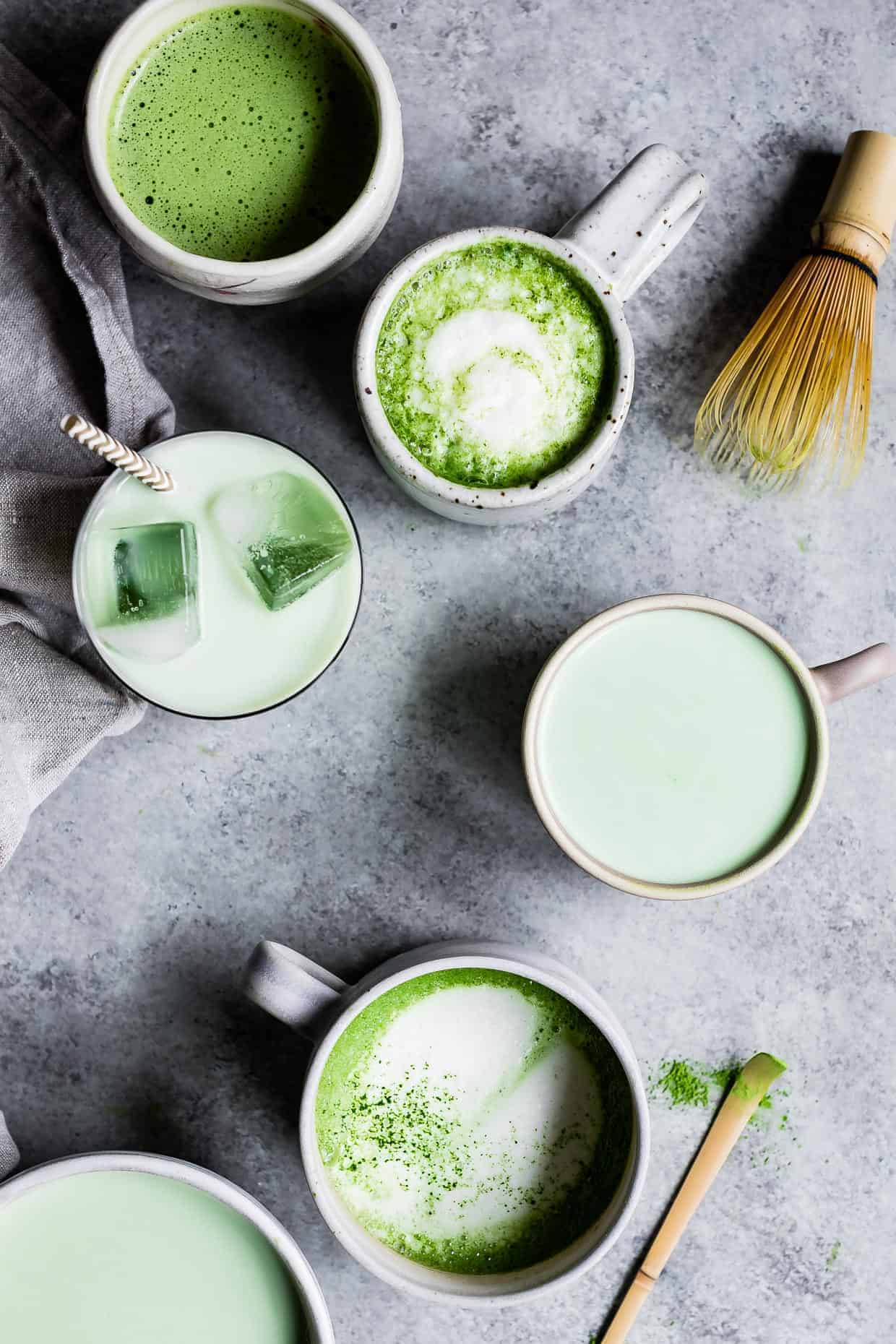
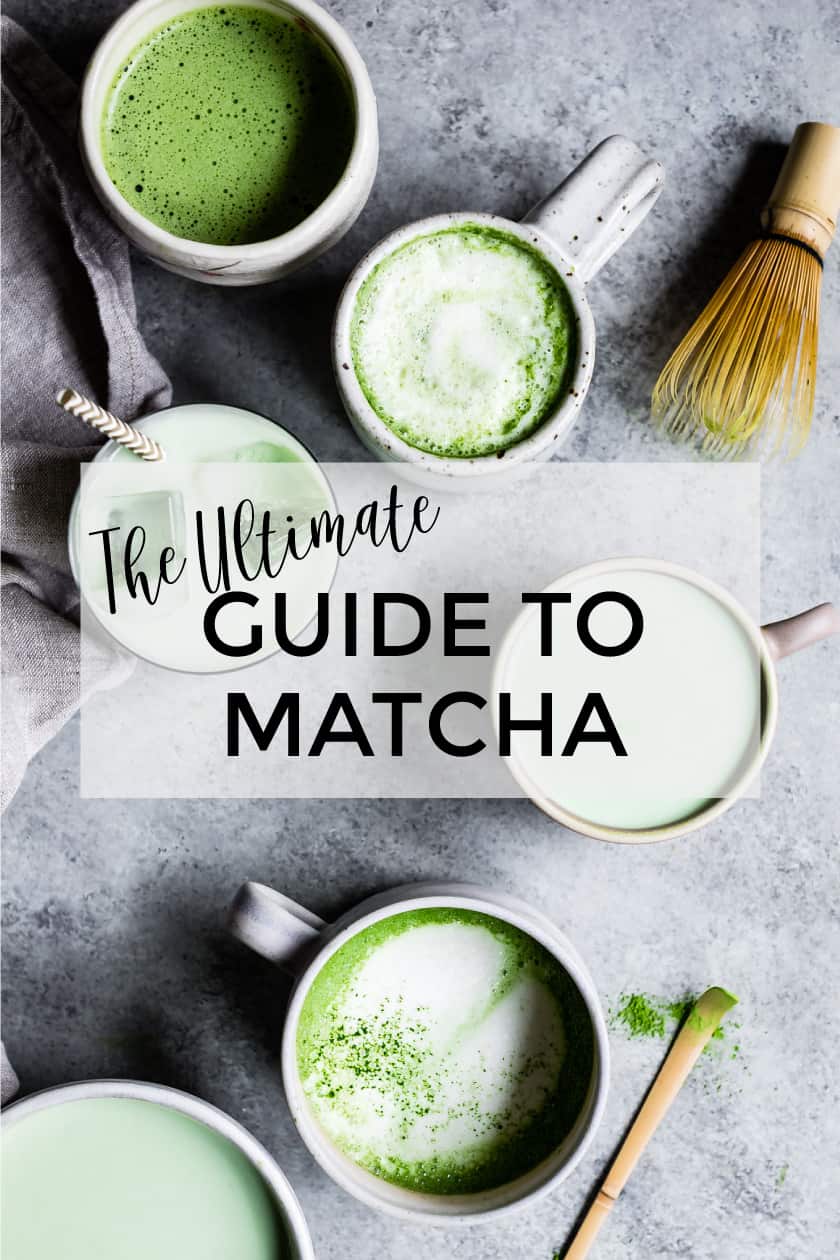
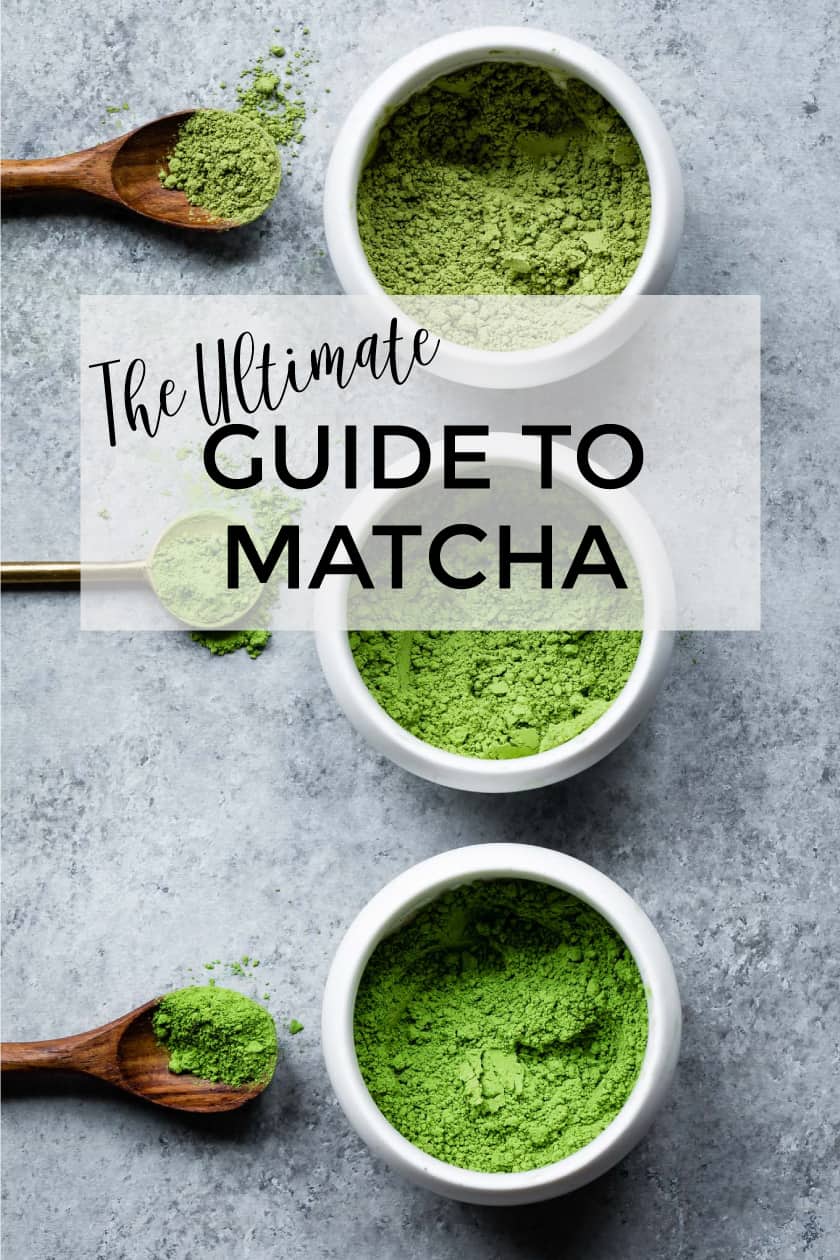






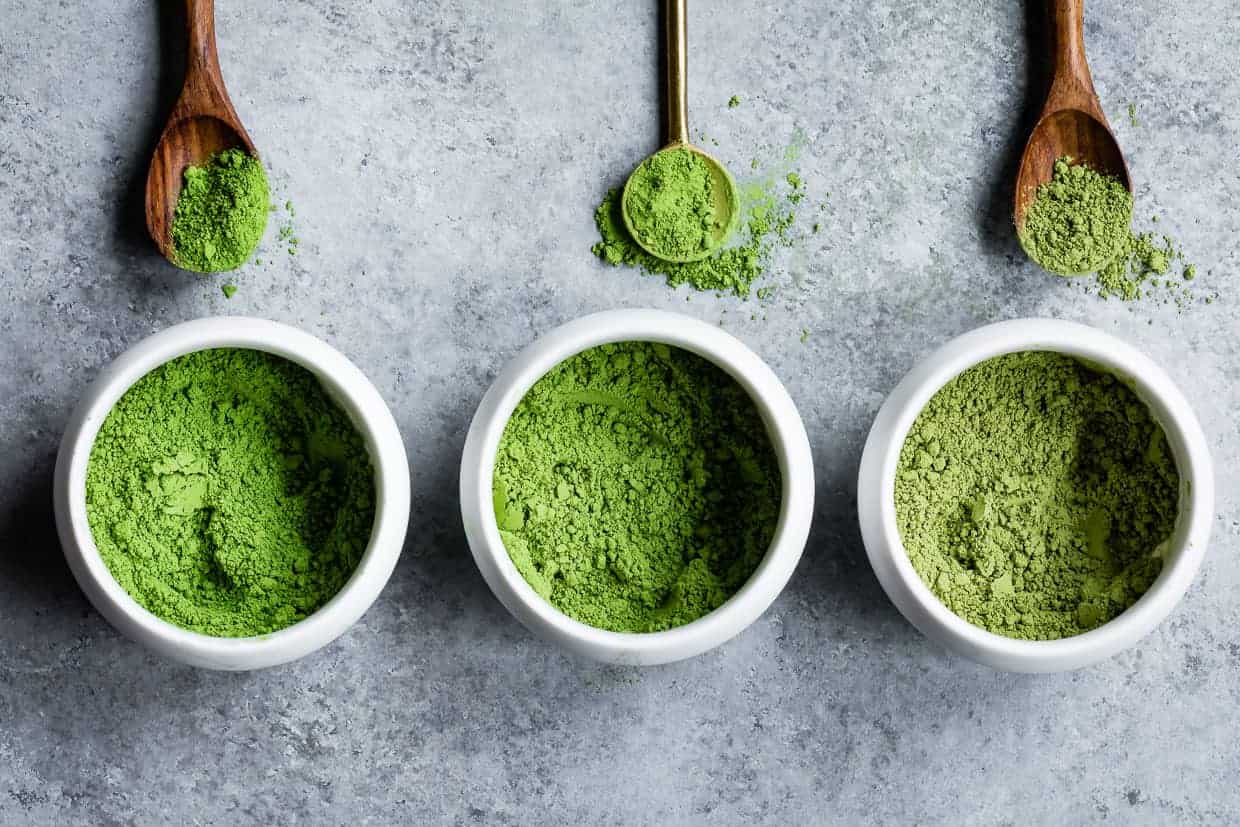

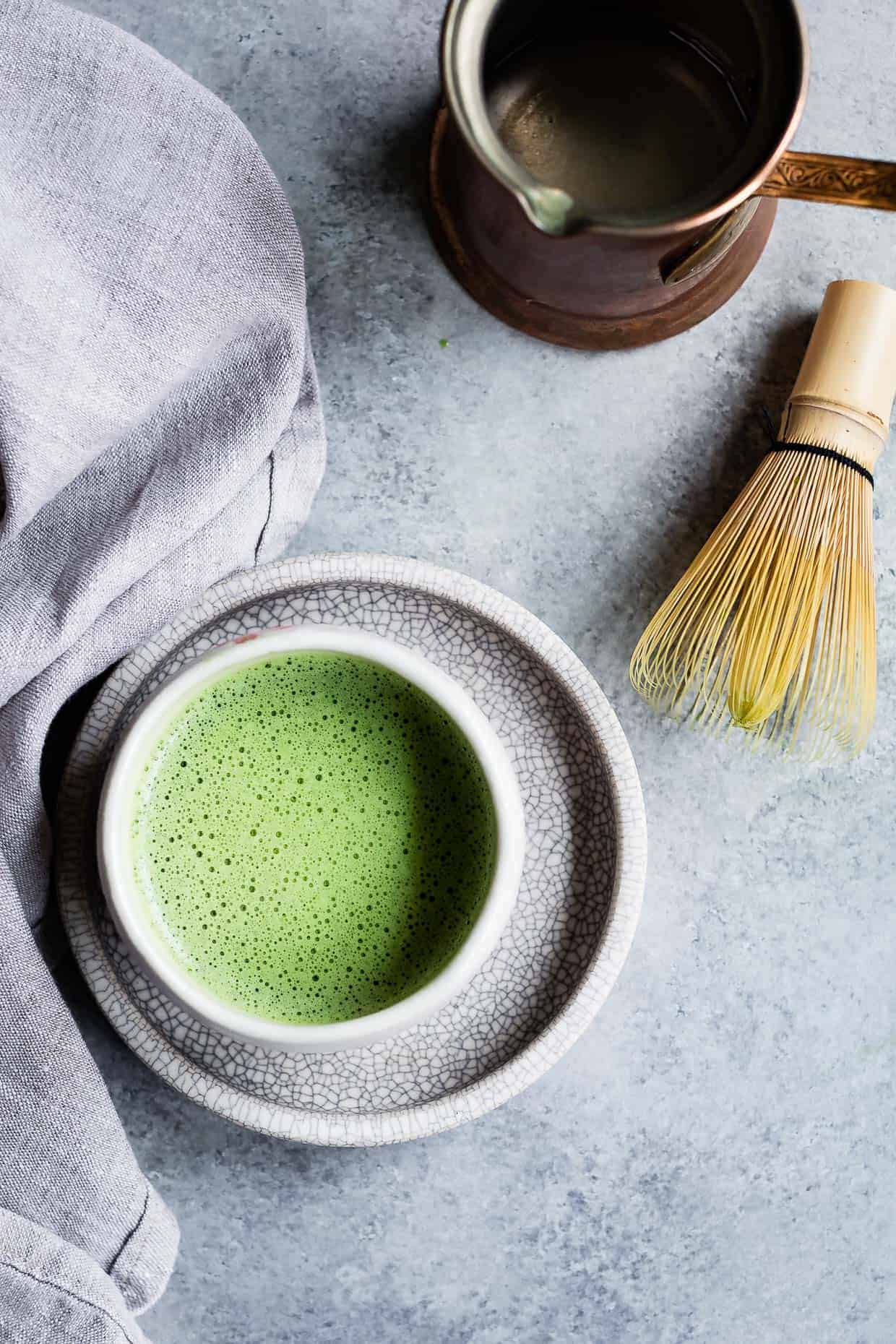



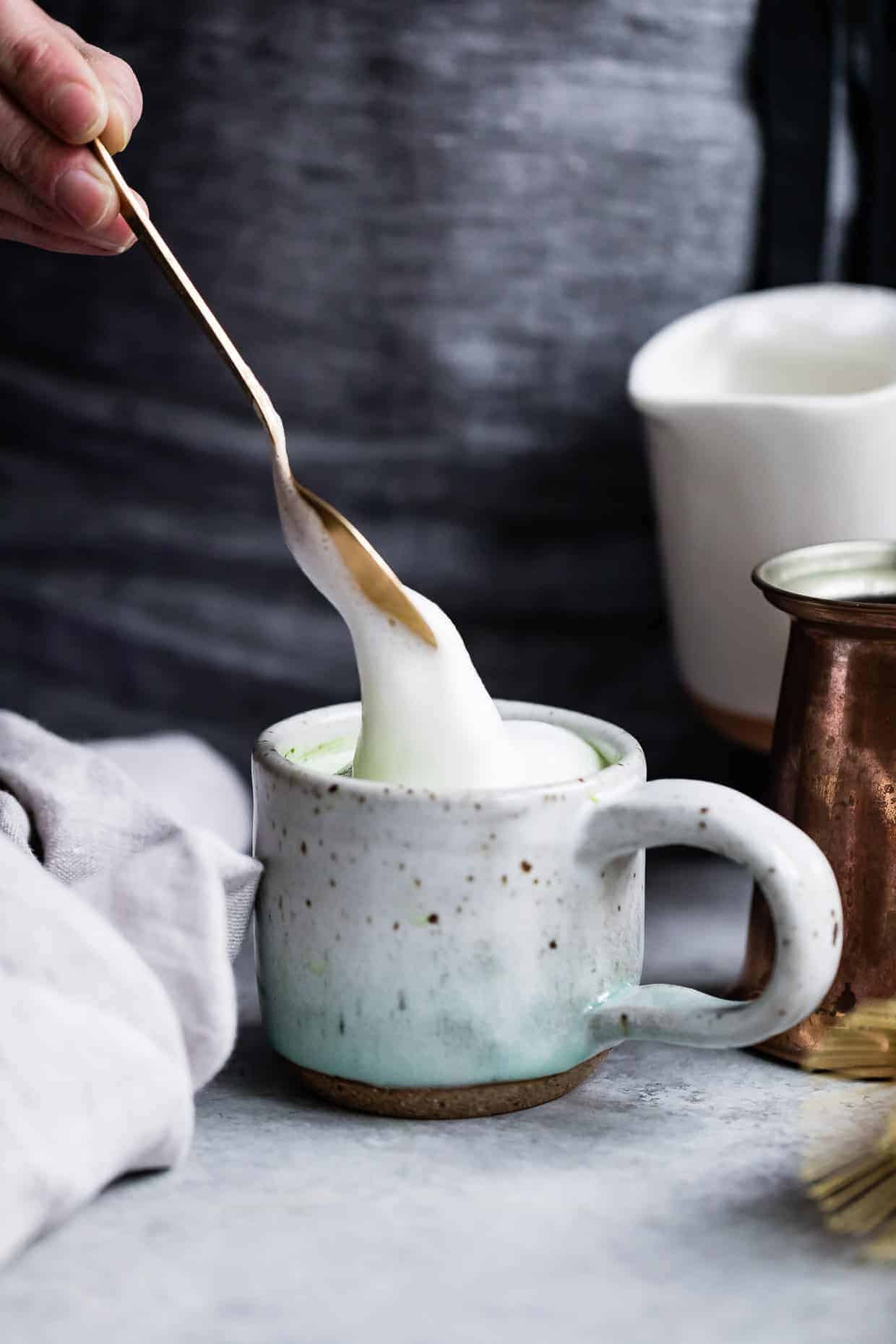

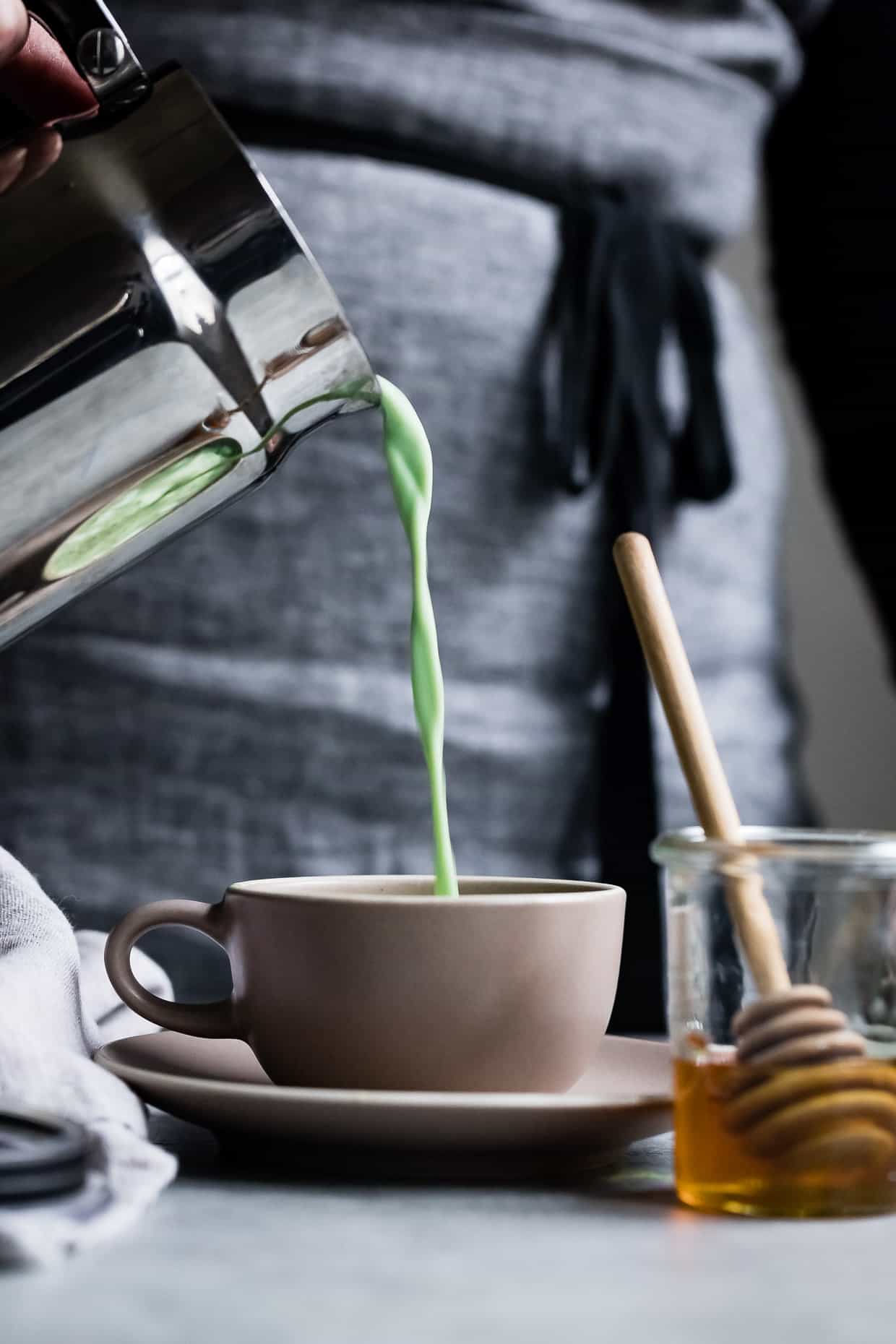
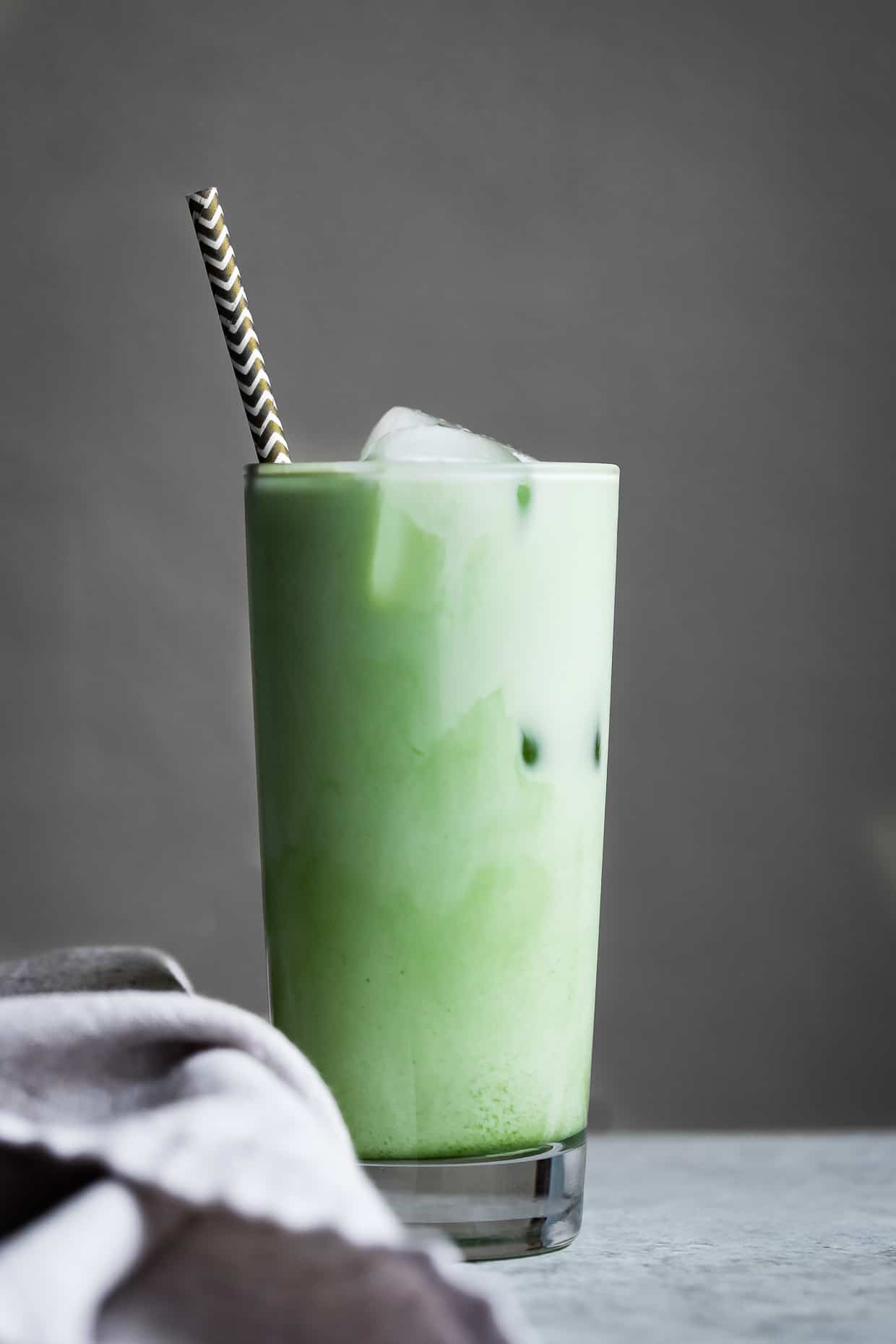



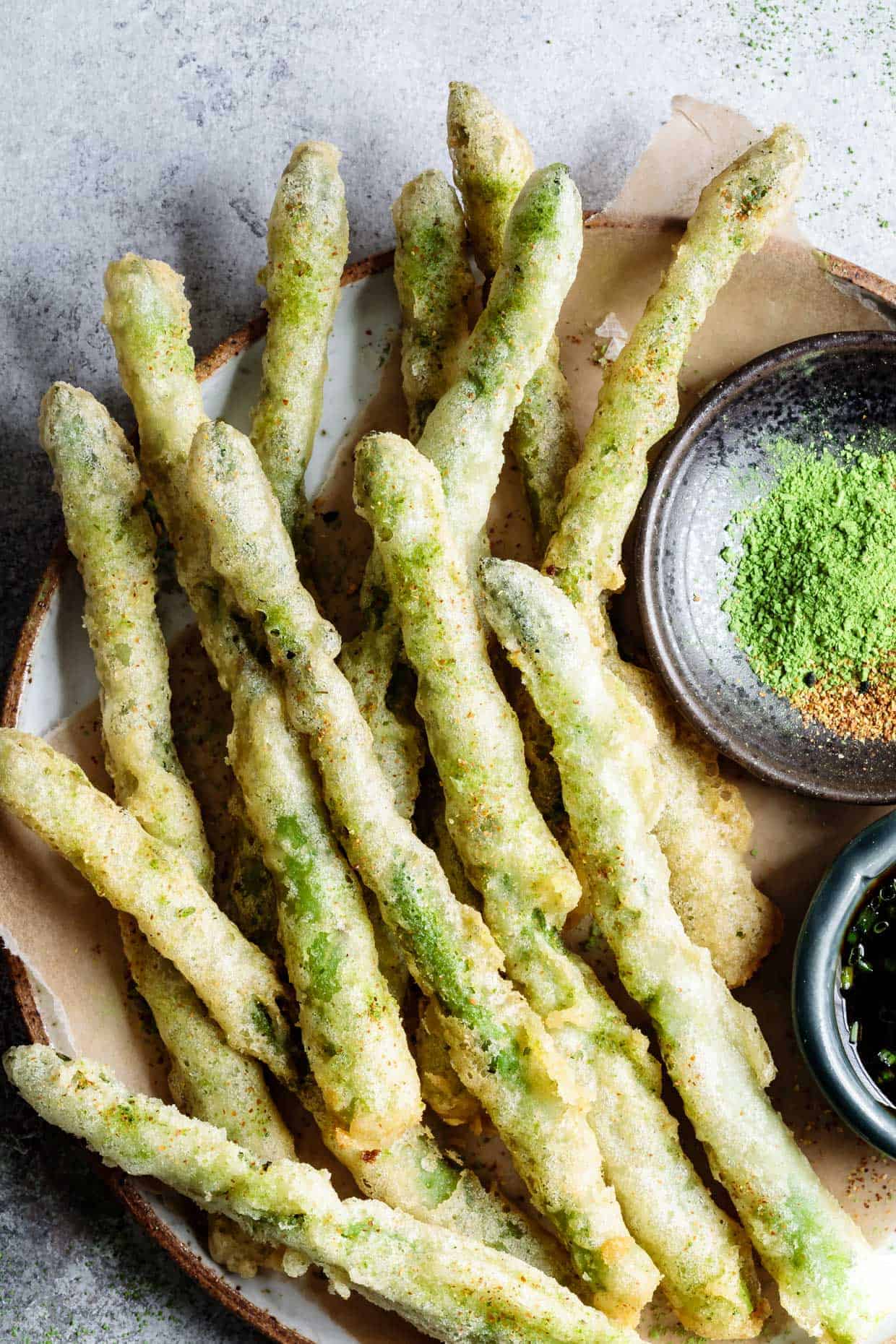



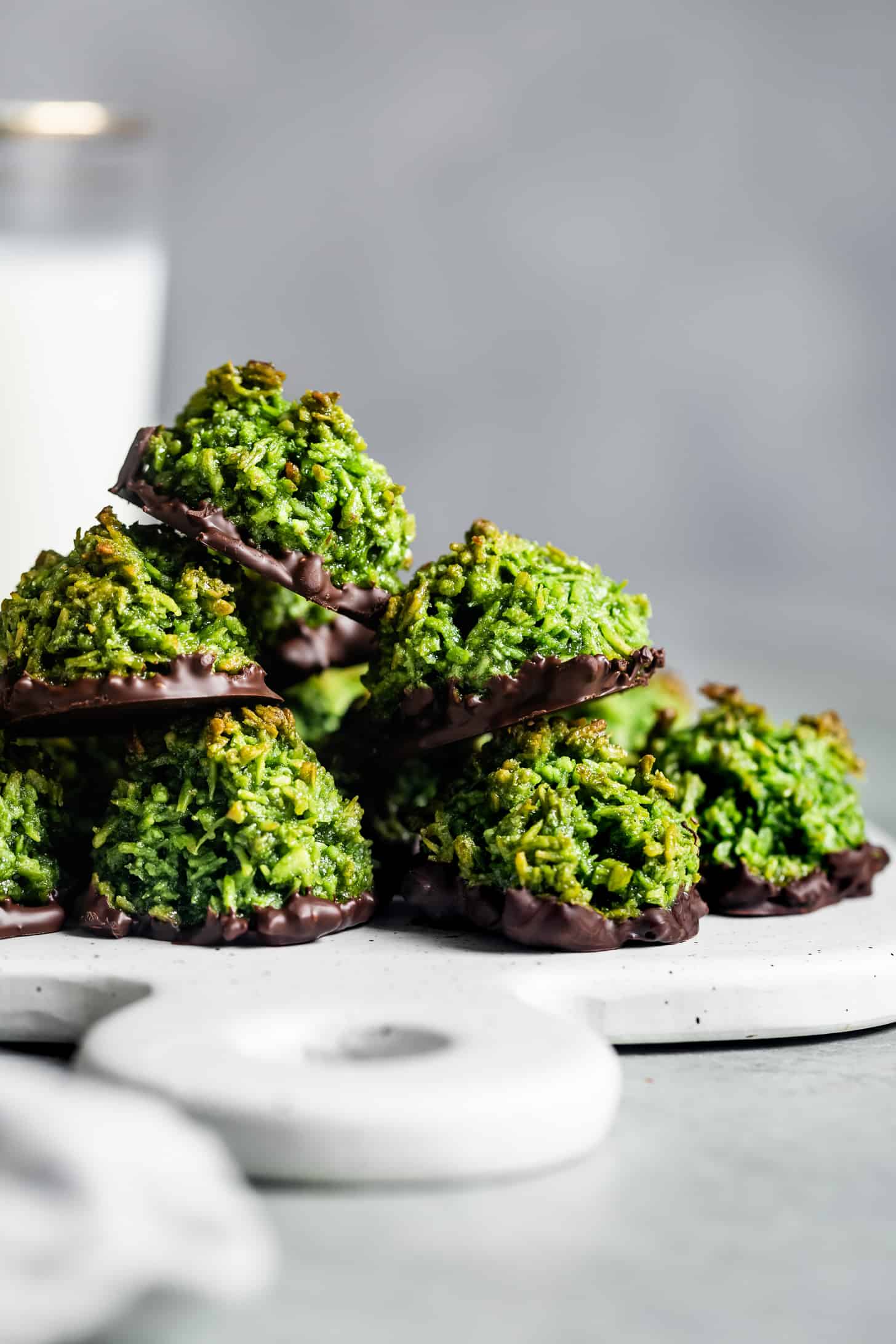
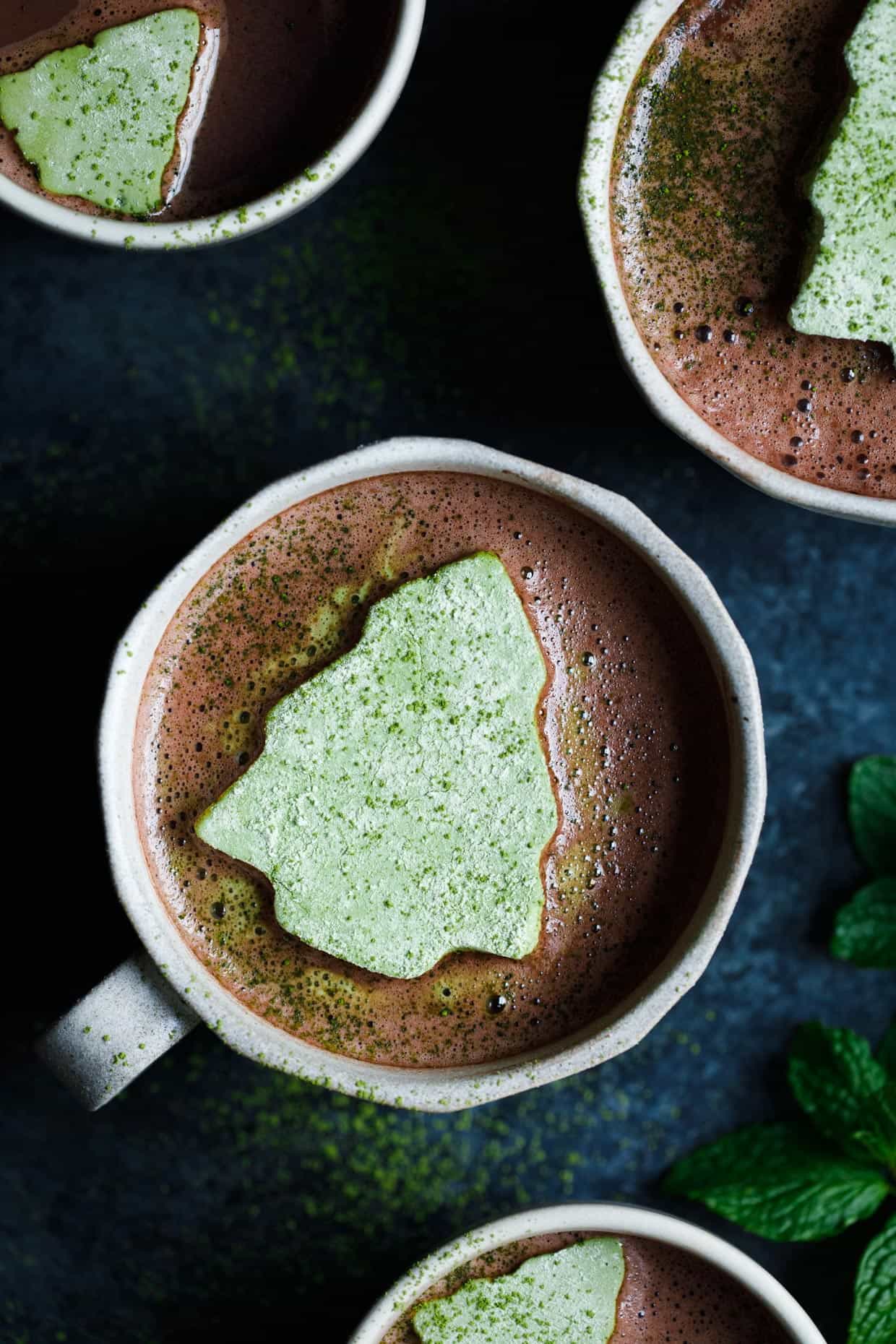









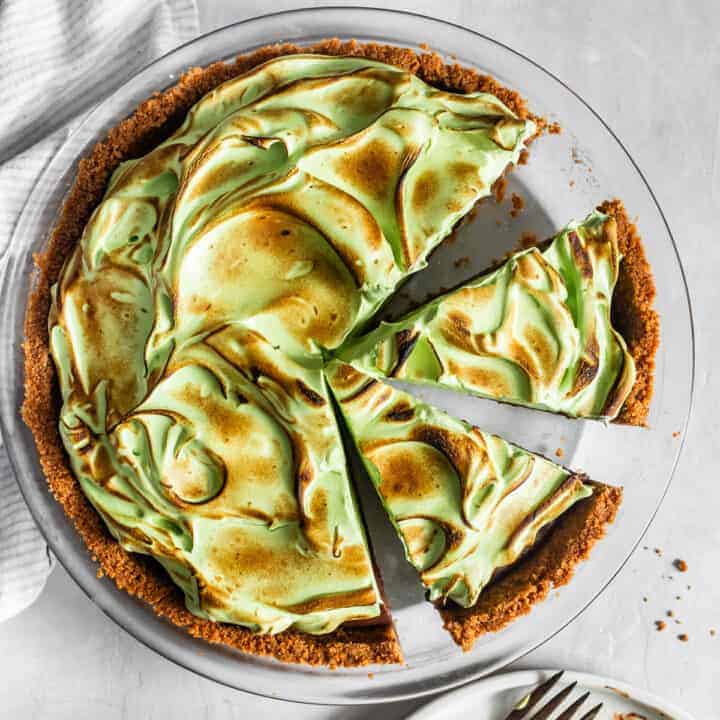

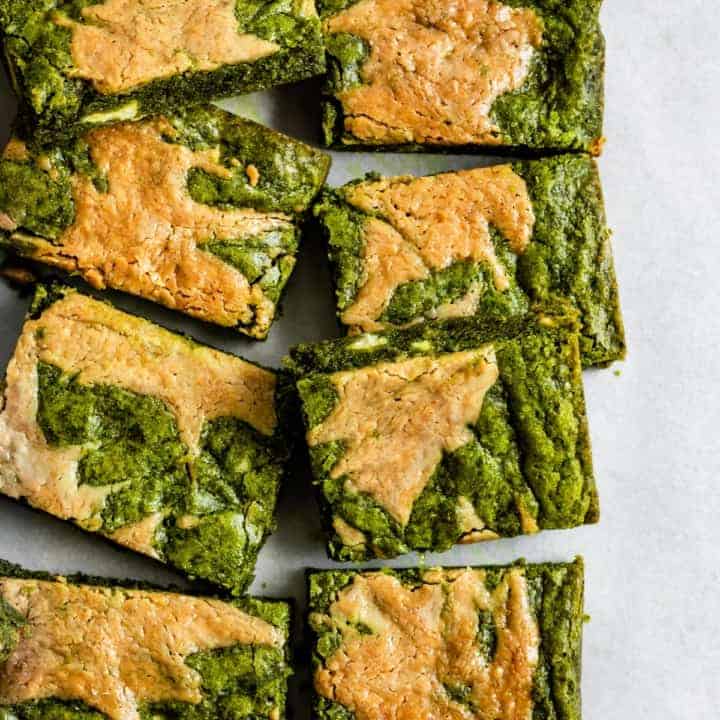

Traci | Vanilla And Bean -
Such a fabulous and beautifully green (!!) roundup post of all things Matcha. I'm smitten too... and was one who gives up coffee most of the week to enjoy Matcha lattes with cashew milk in the mornings or as an early afternoon pick-me-up! Agreed about Encha... it is a fabulous, high quality Matcha. I have an espresso machine for frothing, but oh my goodness, that frother you linked too would be perfect for traveling! Thank you for sharing Sarah! Happy New Year! xo
Karen @ The Food Charlatan -
Fun post Sarah! I don't drink tea so I'm not into Matcha but all your amazingly green photos always captivate me. I'm going to try to un-see Luke Skywalker drinking green milk from those strange sea creatures on The Last Jedi, because that pour shot above totally made me flashback. haha!!
Sasha Swerdloff -
LOVE THIS! I still need to go back and read the whole things because there's just so much good info here. Thanks for putting this together! XO
Alanna -
This post is epic!! Also it's late - I may need a matcha latte tomorrow during our shoot... please??
Liz @ Floating Kitchen -
GIRL! You are the matcha queen. I have to be honest and say I have never loved it the couple times I've tried it. But I'm inspired to look for the brands you mentioned/use your tips and trip again. I probably had some that wasn't top of the line. Looking forward to a better experience!
Sara @ Cake Over Steak -
This post is so legit!! Thanks for sharing your wisdom - I still haven't come around to full-on matcha lattes yet, but I'm bookmarking this for when I do.
Emily -
I literally use my Aeroccino every day to make my matcha and never once considered actually adding the matcha INTO the damn thing with the milk. I mean, I kinda like the whole whisking process, but then again...WHY.
Penny -
Fantastic, comprehensive article. Everything I need to get started. I already have the Aeroccino, matcha, & honey, so making the latte immediately. Thank you for a very helpful article.
jecyl -
This is one of the most comprehensive matcha guides out there! Amazing work, Sarah!
Does it matter if your matcha is organic or not? I read this piece which shines the light on how low quality matcha can is labeled as ceremonial grade by many brands. https://blog.piquetea.com/matcha-green-tea/
Brian -
You should make this post like into a definitive guide or something. I bet a lot of your new readers that come to this site would want to be able to find this post. It's too good to keep secret!
Derek Grimes -
Sounds like it’s just an endorsement for Encha matcha. There are so many better brands of matcha out there. I also read that matcha that Encha sells comes from China.
Sarah Menanix -
Hi! I think you might be mixing them up with sencha matcha that comes from China (and you're right, is not very great). Encha matcha comes from Uji, Kyoto, Japan. I've tried so many brands and it's still my go-to one I drink every day!
D Ro13 -
How many times is the word matcha used in this story? I was gonna count but if figured I'd try something easier like guessing how many jelly beans are in one of those big jugs at the fair. Dang it, now i want a matcha tea.
Blair Egelhoff -
Different varieties of tea leaves can vary greatly in their stimulating or relaxing qualities, partly due to different caffeine content. You’re also likely to enhance your experience of drinking green tea if you stick to certified organic green tea brands.
https://bestproductlab.com/tag/green-tea-caffeine/
Jocelyn -
Oh my! How I found your site is a blessing! I’ve always been curious about which type of matcha is the best. Thanks for doing the test for me! Your recipes sound amazing and your photography is stellar! 🙌. I subscribed and can’t wait to see more of your lovely creations. ♥️
Sandy -
Will ceremonial or culinary grade Matcha turn brown like store brought ones? How to properly store Matcha?
Sarah Menanix -
Over time, ceremonial grade matcha will oxidize and turn brown like the store-bought ones (most grocery store-bought matcha is culinary grade or a lower quality ceremonial grade). This will negatively influence the flavor of your matcha.
Look for brands that consider air-tight storage in their packaging. For optimum taste, I recommend storing your matcha in air-tight packaging in the refrigerator for a maximum of 6 months. If your matcha has lost its vibrant color and the smell is lackluster, it's probably time to toss it!
https://www.studiocasamag.com/ -
Thanks a lot!! Love matcha